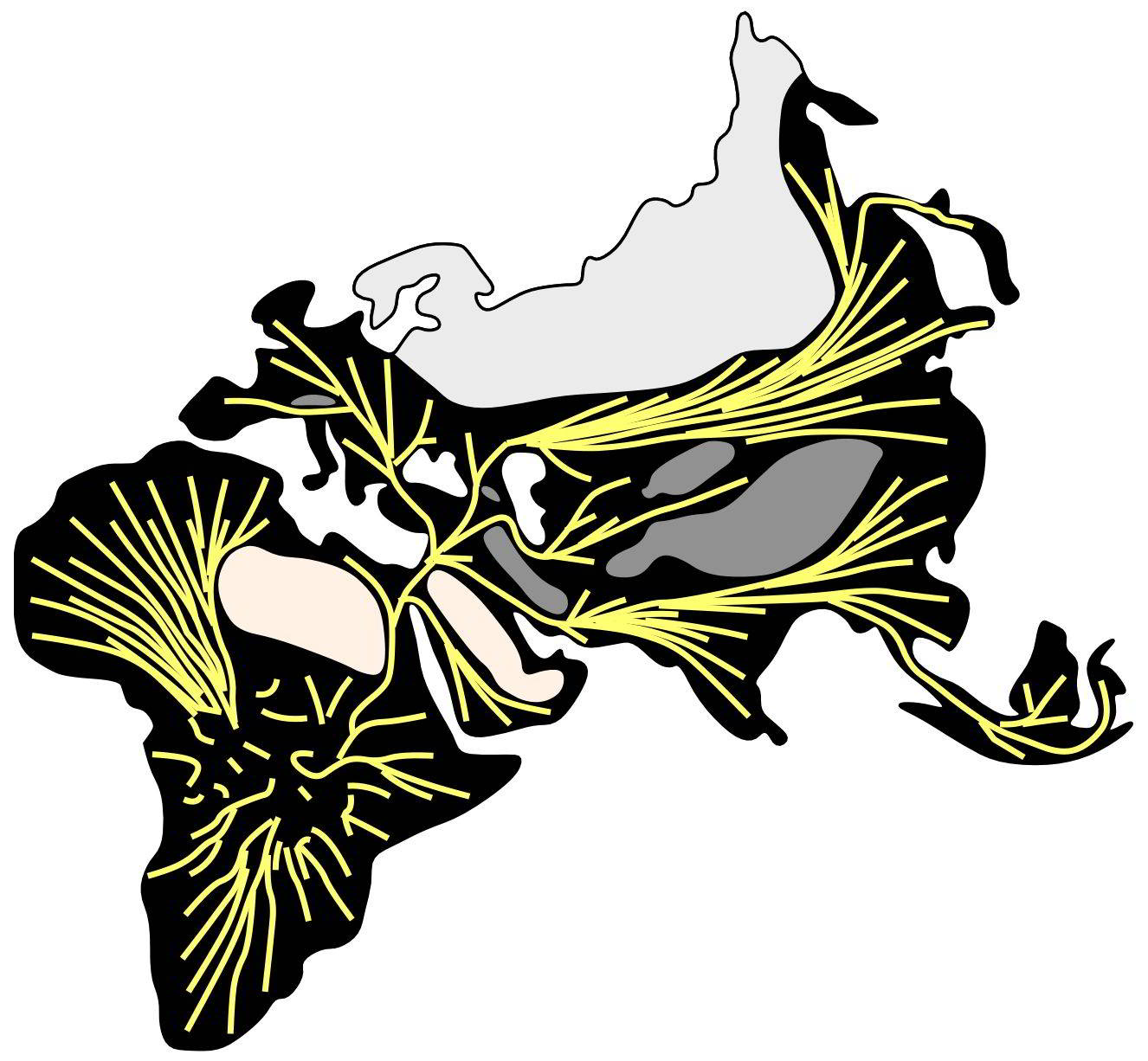News
24.04.2019
Why modern humans come from Africa
In computer simulations, researchers calculate the statistical probability of migratory movements such as that of Homo sapiens
Africa is the cradle of the human species. We know that anatomically modern humans originating there populated the world. It is much less certain why we evolved in Africa or why Homo sapiens was able to survive when other human species such as Neanderthals and Denisovans were not. It may be that the causes are not so much the often-cited environmental factors; pure probability may play a major role. That’s the conclusion drawn by Tübingen geoscientist Professor Paul Bons in a new study: Bons and a multidisciplinary team calculated the relational probabilities between evolutionary processes and migration. The results of their study have now been published in the latest PLOS ONE issue.
The team used computer simulations to investigate the patterns of basic evolutionary processes, such as the slow spreading of genetic mutations, human tendency to mate with people similar to themselves, and human propensity to sometimes invade territory of neighbouring populations Repeated simulations of these parameters showed that these general evolutionary rules can already lead to very large migration events, according to Paul Bons.
In addition, the team determined the most likely origin for large migratory movements: the largest compact populated area. This was Africa most of the time during the Middle Pleistocene ice ages. Other populated areas were smaller or less compact due to mountains and coastlines. Statistically, the most probable origin of our species would therefore be Africa and migration paths most likely emanated from there, according to Bons.
The team intentionally excluded environmental factors to show that they are not needed to explain the sudden spread of modern humans. However, environment may have modified the details of this event. “Migration can happen without necessarily depending on environmental factors,” Bons explains. “Also, every large migration events is accompanied by many small ones. Together they may explain how the whole world became inhabited by only one human species.”
Publication:
Bons, P.D., Bauer, C.C., Bocherens, H., de Riese, T., Drucker, D.G., Francken, M., Menéndez, L., Uhl, A., van Milligen, B.P., Wißing, C. (2019) Out of Africa by spontaneous migration waves. PLOS ONE. http://journals.plos.org/plosone/article?id=10.1371/journal.pone.0201998
Contact:
Professor Paul D. Bons
University of Tübingen
Geosciences - Structural Geology
+49 7071 29-76469
paul.bons@uni-tuebingen.de
Press Contact:
Eberhard Karls Universität Tübingen
Public Relations Department
Dr. Karl Guido Rijkhoek
Director
Antje Karbe
Press Officer
+49 7071 29-76789
Fax +49 7071 29-5566
antje.karbe@uni-tuebingen.de
www.uni-tuebingen.de/en/university/news-and-publications.html

